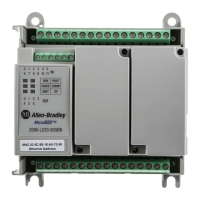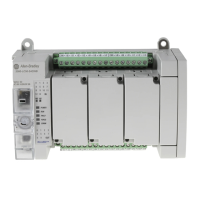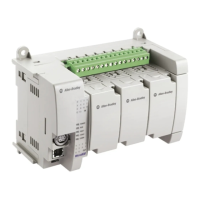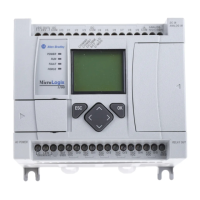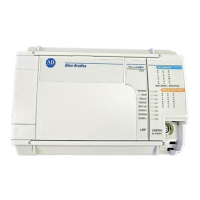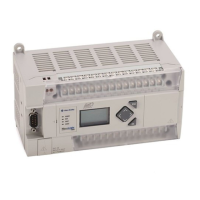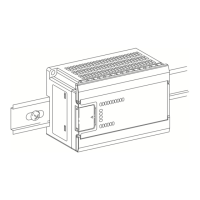Chapter 20 Proportional Integral Derivative (PID) instruction
566 Rockwell Automation Publication 2080-RM001D-EN-E - February 2015
GAIN_PID data type
The following table describes the GAIN_PID data type.
Parameter Data type Description
DirectActing BOOL The type of acting:
• TRUE - direct acting (output moves same direction as error). That is, the actual process value is greater
than the SetPoint and the appropriate controller action is to increase the output (For example: Chilling).
• FALSE - reverse acting (output moves opposite direction as error). That is, the actual process value is
greater than the SetPoint and the appropriate controller action is to decrease the output (For example:
Heating).
ProportionalGain REAL Proportional gain for PID (>= 0.0001).
TimeIntegral REAL Time integral value for PID (>= 0.0001).
TimeDerivative REAL Time derivative value for PID (> 0.0).
DerivativeGain REAL Derivative gain for PID (> 0.0).
AT_Param data type
The following table describes the AT_Param data type parameters.
Parameter Data type Description
Load REAL Load parameter for auto tuning. This is the output value when starting AutoTune.
Deviation REAL Deviation for auto tuning. This is the standard deviation used to evaluate the noise band needed for AutoTune.
Step REAL Step value for AutoTune. Must be greater than noise band and less than ½ Load.
ATDynamSet REAL Waiting time in seconds before abandoning auto tune.
ATReset BOOL The indication of whether the output value is reset to zero after an AutoTune sequence:
• TRUE - resets output to zero.
• FALSE - leaves 0utput at Load value.
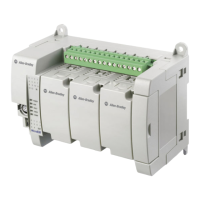
